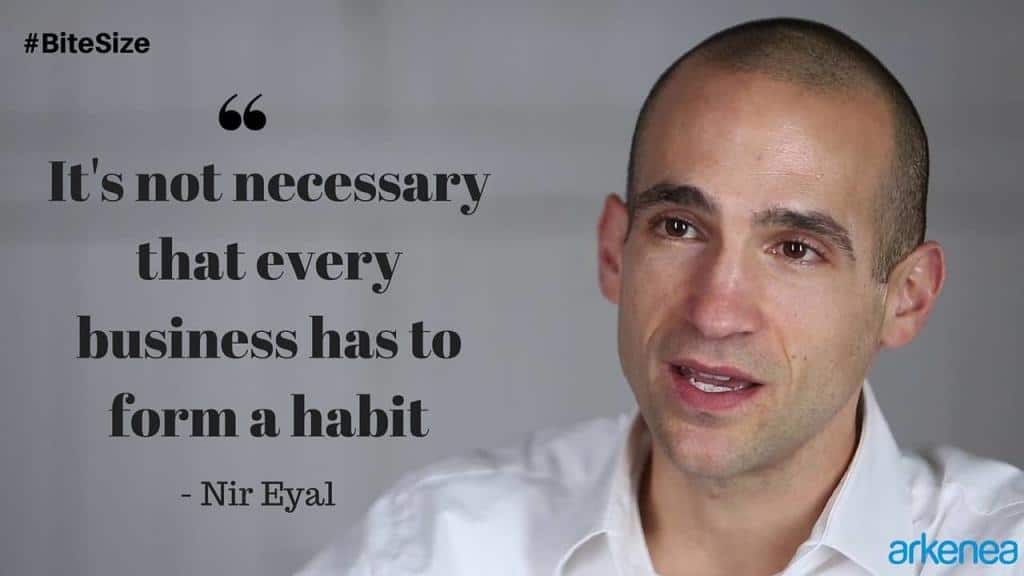In the latest episode of #BiteSize, Nir Eyal shares strategies from his book on how to build habit-forming products.
Nir Eyal
Nir Eyal writes, consults, and teaches about the intersection of psychology, technology, and business. The M.I.T. Technology Review dubbed Nir, “The Prophet of Habit-Forming Technology.” Nir founded two tech companies since 2003 and has taught at the Stanford Graduate School of Business and the Hasso Plattner Institute of Design at Stanford. He is the author of the bestselling book, Hooked: How to Build Habit-Forming Products.
In addition to blogging at NirAndFar.com, Nir is a contributing writer for TechCrunch, Inc. and Psychology Today.
Some of his past investments include: Eventbrite, Product Hunt, Pantry, Refresh.io (acquired by LinkedIn), Happy Bits, Presence Learning, 7 Cups of Tea, Pana, and Symphony Commerce.
[Transcript of the video below]Transcript
The first step is to determine whether your business model needs a habit. There are lots of companies out there, that can provide valuable products and services to their customers that don’t need a habit. You can engage your customers as a one-time transaction and can have a very nice business.
An insurance company doesn’t necessarily need to create a habit with its users because it’s a one-time sale and then for years they don’t really hear much from the customers.
Now, what that risk is if you don’t engage with your customers, it makes it easier for the competitors to come in and take those customers away, particularly with the goods that are difficult to differentiate.
Speaking of goods that aren’t frequent like insurance. People switch insurance because it is a little bit cheaper here and there. The way to retain your users is to keep them engaged. But, it not necessary that every business has to form a habit. Lots of companies can deliver value to their customers without building habits.
But if your business requires a habit, if the way you create and deliver value to your customer requires unprompted engagement, then you need what I call a ‘Hook’.
A ‘Hook’ is a four-step process that connects your users problem to the product with enough frequency to form a habit.
In my 3 years of study and writing this book in a class that I teach at the Graduate School of Business and Design at Stanford, what I learned in my study was that this ‘Hook’ is endemic to all sorts of habit-forming products and it has 4 basic steps.
The first step is a trigger, then an action, then a reward, and finally an investment. Through successive cycles of this ‘Hook’ customer’s preferences are shaped, their tastes are formed, and these habits take hold.
